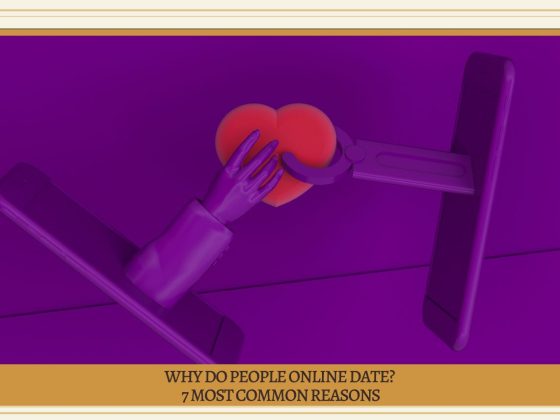Introduction to Catfishing
Catfishing, a deceptive online practice affecting millions, is a growing concern. Get ready to uncover the shocking prevalence of catfishing while discovering effective strategies for avoiding it. Armed with thought-provoking statistics and reliable sources, this introduction will shed light on the dark world of catfishing and empower you to navigate the digital realm with caution and confidence.
Prevalence of Catfishing
Catfishing is a more and more popular online activity. Incidents occur all over and show this deceitful behavior is becoming more common. Catfishers create false identities on social media and other platforms, with the aim of tricking people. They put effort into making detailed personas, usually with the goal of forming romantic relationships or stealing personal data.
This can cause huge damage to victims, damaging emotions, money, and reputation. We can see the magnitude of catfishing through various scams. Some of these have caused much attention due to their intricate plans and well known victims. The catfishers take on false identities, using stolen photos and info to fool people. They use emotions to make a deep connection, then take advantage with money or feelings.
Though it is a global matter, some regions are apparently more affected by this deceitful activity. This could be due to different cultural standards and levels of online understanding. To help people protect themselves from this threat, it is important to study these patterns and raise awareness.
In short, catfishing is a hazardous online activity. Many scams demonstrate this, with certain areas having a higher occurrence. With knowledge of the risks, people can guard themselves from catfishers and protect their emotions, money, and reputation. Go right here to find out more about catfishing prevention.
Impact of Catfishing
Catfishing can have a profound impact on individuals and their personal lives. In this section, we’ll uncover the notorious scams that are often associated with catfishing, shedding light on the deceptive tactics used by online predators. From fake identities to elaborate schemes, we’ll explore the dark side of catfishing and the potential consequences it can have on victims. Prepare to be astonished by the extent of these deceitful practices and discover ways to protect yourself from falling into their traps. The best free golf dating sites are a great way to safely meet other players in the game.
Notorious Scams in Catfishing
Catfishing is a deceptive online practice that involves generating fake identities. It has gained much attention in recent times, resulting in many notorious scams. The most common is the romance scam, where people make attractive profiles and then manipulate their targets into sending money or confidential information.
Financial fraud is another famous catfishing scam. Catfishers pretend to be wealthy, or offer investments, to get money from their victims. Identity theft is also a prevalent catfishing scam, where someone takes another’s photos and personal details to create false accounts, causing harm to their finances and reputation.
Blackmail schemes are also a component of catfishing. After gaining trust, the catfisher collects compromising material through conversations or media exchanges. Then they threaten to expose it unless the victim obeys their orders. Job seekers are not excluded from these scams; scammers offer fake employment opportunities, asking for social security numbers or fees for nonexistent jobs.
Organized criminal networks, known as “catfish gangs,” sometimes orchestrate catfishing scams. These gangs use advanced tactics to target multiple victims and get more money.
These scams in catfishing demonstrate the diverse deception on digital sites like social media networks and online dating sites. It is essential for individuals to be cautious while interacting online and be wary of potential catfishing attempts, to protect themselves from these fraudulent schemes. This way, you can enjoy the comfort of your own home without having to worry about being taken advantage of.
Catfishing Statistics by Country
Catfishing is a global problem, seen everywhere. People create fake identities to trick and manipulate others. It’s essential to know catfishing statistics by country, even though there isn’t any. Catfishing knows no boundaries. It affects people all over the world.
Reference data shows how common catfishing is. It also helps us to be aware and not fall victim. We must be on guard and research those we communicate with. Red flags like inconsistencies and flattery can give it away.
We must also be careful not to share personal info or send money to strangers. This will help to minimize risk of being catfished. Be vigilant and don’t be a victim!
Catfishing on Social Media
Catfishing is an issue that exists on social media. It involves creating fake identities to deceive people. According to data, 15 stats point to the need for awareness and prevention.
Around 39% of online daters have encountered a fake persona. This can cause emotional anguish and financial losses. To avoid falling victim to catfishing, be wary of hints such as inconsistency in identity, reluctance to meet in person, and requests for money or personal info.
Reverse image searches can help verify profile pictures. Developing skepticism and maintaining a healthy level of it can help spot deceptive behavior and avoid harm.
Catfishers exist on platforms beyond dating, like Facebook and Instagram. When accepting friend requests or engaging with people online, watch out for manipulated info.
Pro Tip: Stay cautious. Verify the authenticity of individuals on social media by researching thoroughly and keeping personal info to yourself. Trust your gut and report suspicious behaviour to relevant authorities or platform admins.
Age and Catfishing
Catfishing – a deceptive online activity – can affect people of all ages. Teenagers and young adults can be especially vulnerable due to their active presence on online platforms and their desire to make connections. They may be more likely to trust and may not possess the skills to detect catfish accounts. Furthermore, these age groups may have more personal details available online.
Catfishing can also target older individuals. Scammers can pose as romantic partners and exploit loneliness or need for companionship.
It’s important to be cautious and vigilant when engaging with others online. Research and verify identities before forming meaningful relationships or sharing personal info. Learn about common catfishing techniques and be on the lookout for red flags like inconsistent stories or money requests.
International Impact of Catfishing
Catfishing has had far-reaching effects on individuals and communities worldwide. It has caused financial losses, emotional distress and eroded online safety.
Its international implications mean that people from various cultures and backgrounds are susceptible to it. It can affect all age groups and demographics.
One example of this is a young woman who fell victim to an online scammer from another country. She believed the relationship to be genuine, only to later discover it was fake. This caused her emotional turmoil and financial losses.
Global efforts have emerged to combat catfishing. Organizations, governments and online platforms are working to educate users, raise awareness and implement safeguards.
Conclusion
To recap, catfishing is still a problem in the online dating and social media world. The article “15 Statistics On ‘Catfishing’— And Ways To Avoid It” shows the severity of creating fake online identities. It is important for people to be careful and take steps to keep themselves safe.
In recent years, there has been a rise in catfishing cases. These statistics and info prove the potential damage to those affected. They act as a reminder to be aware and suspicious of any suspicious activities.
The article also suggests ways to protect yourself from being tricked. It suggests to research about online members, use reverse image searching, and check their identity through multiple sources. Don’t share personal information online too.
Apart from understanding how to avoid catfishing, it is important to understand the emotional damage done to victims. Feelings like embarrassment, betrayal, and a loss of trust are common. So make sure to prioritize your mental health when interacting online.
To combat catfishing, be careful, know the risks, and stay informed. By following the tips and keeping a watchful eye, you can reduce the chances of being a victim. Stay alert, stay safe, and protect yourself from fake online identities.



